“Where is the Palestinian Gandhi? In Israeli prison, of course!,” was the title of an article by Jo Ehrlich published in Modoweiss.net on Dec 21, 2009. That was almost exactly one year after Israel’s concluded a major war against Gaza. The so-called Operation Cast Lead (December 27, 2008 – January 18, 2009) was, till then, the deadliest Israeli attack against the impoverished strip for many years.
Ehrlich was not in the least being belittling by raising the question about the ‘Palestinian Gandhi’ but responding to the patronization of others. Right from the onset, he remarked: “Not that I’m in any way playing into the Palestinian Gandhi dialogue, I think it’s actually pretty diversionary/racist. But sometimes you have to laugh in order not to cry..”
Indeed, the question was and remains condescending, ignorant, patronizing and utterly racist. But the question was also pervasive, including among people who classify themselves as ‘pro-Palestinian activists’.
Now that Israel’s latest war – so-called Operation Protective Edge – has surpassed Cast Lead, in terms of duration, causalities, level of destruction, but also the sheer horrendousness of its targeting of civilians, as dozens of families were entirely wiped out – the Gandhi question seems more muted than usual. To understand why, one needs to first examine the reason of why Palestinians were demanded to produce a non-violent Gandhi alternative in their struggle for freedom in the first place.
The Second Palestinian Intifada or uprising (2000-2005) was inaugurated with an extremely violent Israeli response. Israeli leaders at the time meant to send a message to late Palestinian leader Yasser Arafat that they had no patience for any act of collective defiance, as they were convinced that Arafat engineered the Intifada to strengthen his political possession in the ‘peace talks’, which, ultimately proved a farce.
Caught in an impossible situation – massive US-fed Israeli war machine that harvested hundreds of lives every month– and having no faith in their leadership, Palestinians resorted to arms, using suicide bombings as well as other violent methods. The tactic raised much controversy – due to the death toll among Israeli civilians – and was quickly used in Israel-western propaganda to, retrospectively explain Israel’s military occupation, and justify its harsh military tactics.
Those who dared explain Palestinian violence within its proper and larger context, or underscore that many more Palestinian civilians were still being killed by the Israeli army were shunned by the media, and, at times, were seen as a liability by those who insisted to classify Palestinians within a narrative of victimization.
Many westerners (from presidents, to philosophers, to journalists, to social media activists..) deliberated the matter with much enthusiasm. The fact that few western countries have truly experienced anti-colonial national liberation struggle in its modern history, thus lack real understanding of the humiliation and anger experienced by colonized nations, seemed to matter little. Some were simply concerned about Israel, and no one else; others, wanted to preserve the image of the Palestinian as an occupied, hapless, eternal victim.
The most obscene presentation of this language was made by then-newly elected US President Barack Obama, who stood at a Cairo university podium on June 4, 2009, to convey to Palestinians a most denigrating, insensitive and highly inaccurate message:
“Palestinians must abandon violence. Resistance through violence and killing is wrong and it does not succeed. For centuries, black people in America suffered the lash of the whip as slaves and the humiliation of segregation. But it was not violence that won full and equal rights.. This same story can be told by people from South Africa to South Asia; from Eastern Europe to Indonesia. It’s a story with a simple truth: that violence is a dead end.”
Obama’s message painted the Palestinian struggle as an abnormality in an otherwise a perfectly peaceful national liberation struggles around the world. The message is of course untrue. More, he either didn’t know or wished to ignore Palestinian history where popular, nonviolent resistance that goes back to the 1920’s and 30’s, and arguably, earlier than that. Obama, like many others, failed to appreciate the level of extreme Israeli violence, which employ weapons that Obama had himself supplied Tel Aviv, to subdue Palestinian resistance and maintain a relatively easy military occupation and thriving Jewish settlements built illegally on stolen Palestinian land.
But the decisive point in the discussion was the Second Intifada, which wrought much Israeli violence resulting in the death of thousands. The political implications of the uprising were also quite significant as it divided Palestinians between those who were intimidating by the Israeli tactics into submissions (the so-called moderates), and others who seemed unrepentant (the so-called radicals).
For nearly ten years now, the debate raged. Some out rightly condemned Palestinian armed resistance, others offered mutual criticism of Israeli and Hamas violence, while another group simply preached about the futility of armed struggle in the face of a country with nuclear weapons capable of blowing up much of the globe at the push of a button.
That debate, although made for an exquisite discussion on online newspapers and social media, hardly registered amongst ordinary Palestinians, especially those in Gaza. While Gaza intellectuals did contend with new ideas of how to build international solidarity to end the Israeli siege, get their message out to the world, and even question the timing of firing rockets into Israel, few probed the principle of armed resistance.
Of course, Palestinians know best, much better than Obama and other preachers elsewhere. They know that collective resistance is not always a tactic determined through social media discussions; that when one’s children are pulverised by US-supplied killing technology, there is no time to lay flat and sing ‘we shall overcome,’ but to prevent the rest of the tanks from entering into the neighbourhood – be it Shujaiya, Jabalya or Maghazi. They also know that Israeli violence is a result of a decided political agenda, and is not tailored around the nature of Palestinian resistance. But more importantly, history has taught them, that when Israelis come to Gaza as invaders, few will stand in Gaza’s defence before the western-financed death machine, but Gaza’s own sons and daughters. If Gazans don’t defend their cities, no one else will.
Although the disparity of the fight between Israel and Palestinian resistance is as highlighted today as ever before, Palestinian resistance has matured. The fact that they killed dozens of soldiers and only three civilians should be noted, as is Israel’s disgraceful targeting of hospitals, schools, UN shelters and even graveyards. Maintaining that level of discipline in the most unequalled fight one can imagine is as close to the very battlefield ethics that the US and Israel often breach, but never, ever respect.
As great as Gandhi was in the context of his country’s struggle against colonialism, which remains a source of inspiration for many Palestinians, Palestine has its own heroes, resisters, women and men who are engraving a legend of their own in Gaza and the rest of Palestine.
As for those who have busily asked the question of where is the Palestinian Gandhi, it is much more affective for them to use their energies to block their governments’ shipments of weapons to Israel, which, as of August 6, killed nearly 1,900 and wounded over 9,500, vast majority of them are civilians.
![]()
For who does not understand the need or concept of resistance of Palestine, recommended read:
The History of Resistance – The Eagle of Palestine
- Special Topic – All Israeli Massacres on Palestinians
- iRemember… – Confirmed Names of Martyrs Occupation (*)
- Special Topic – Ethnic Cleansing
- Israeli escalation in Gaza – A cover-up for settlement activity
- “Slow Death” -International report: Collective punishment of Gaza has reached critical stage – Incl Full Report PDF
- A “Leaflet” to the World about it’s own “forgotten” Extermination Camp called Gaza
- Gaza Siege Harshness Continues. Israel’s committing slow-motion genocide ~ by Stephen Lendman
THE LEGAL RIGHT OF RESISTANCE
Is Resisting Genocide a Human Right?
81 Notre Dame Law Review1275(2006). Conducting an in-depth study of the genocide in Darfur, Sudan, and also discussing other genocides, this article details the inadequacy of many of the international community’s response to genocides, such as “targeted sanctions” or international peacekeeping forces. Examining international legal authorities such as the Genocide Convention, the Universal Declaration of Human Rights, and the International Court of Justice, the article demonstrates that groups which are being subjected to genocide have a legal right of self-defense. International treaties, Security Council arms embargoes, or national gun control laws cannot lawfully be enforced in a manner which prevents self-defense resistance to a genocide in progress, because under international law, the prohibition against any form of complicity in genocide takes legal precedence over lesser laws. With Paul Gallant & Joanne D. Eisen. In PDF.
http://www.davekopel.com/2a/Foreign/genocide.pdf
- The Palestinian Right of Self Defense
- Brayer: The Absolute Right of Palestinian Resistance – Source
- No. Israel Does Not Have the Right to Self-Defense In International Law Against Occupied Palestinian Territory – Source
- If Jews in WWII Warsaw would have had rockets: They would have fired them too – by occpal
MYTHS & FACTS ABOUT THE ROCKETS FROM GAZA
- The “Rocket” from Gaza Myth – Photography
- More facts about the Rocket from Gaza Myths – Storify
- Half the story: What @IDFSpokesperson leaves out about #Gaza ~ by @yousefmunayyer
- Israel and #Gaza: Context Behind Projectile Fire ~ by @yousefmunayyer
- Truths and lies behind Israel’s attacks on Gaza and its whining about rockets ~ by @AliAbunimah
- Israel is not looking for peace. Nor talks. But: This
* The list of shuhada does not display, the numerous victims of the zionist occupation which are undocumented by media. Nor it displays the victims of the “silent onslaught” due to restrictions of movement, ability to go to hospitals for treatment or life saving surgery, due to lack of medication because of the blockades and so on. For example: The Slow Motion Genocide by the Siege on Gaza only, killed 600 patients since Gaza got under Israeli Siege.
For an overview of All Israeli Massacres Palestinians go here
Neither does this list, display the avoidable mortality. A clear and statistical factual evidence, about the number of deaths due to indecent ruling by occupation forces. For even an occupier has obligations under International Laws, Geneva Convention and the Hague regulations, which it is neglecting. These circumstances, together with deliberate policies of the occupier to neglect and even deny every basic human right, severes avoidable mortality which is totally silenced by media or reporting organisations. While in the Holocaust, 1 on 6 Jewish people directly died of deliberate neglect, so if we believe the facts over 1 million due to avoidable mortality, neither should these same circumstances be ignores which are ongoing in Palestine. For this report displays a avoidable morality of at least 0,5 million Palestinians.
How many more dead corpses of Palestinians does the international community need to see in order to act? How many more cruelties and violations of Human Rights, Regulations and International Law will be needed to intervene so this ongoing warcrime is being stopped once and for all.

 August 6, 2014
August 6, 2014 



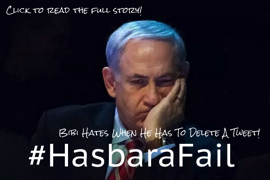



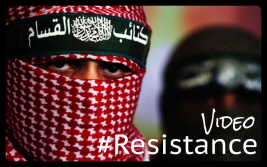

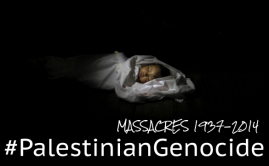





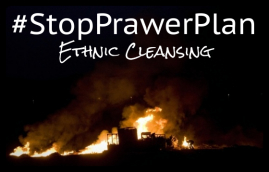

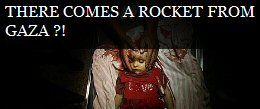








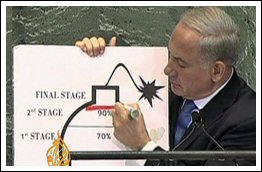
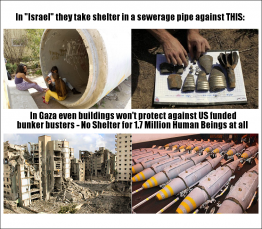





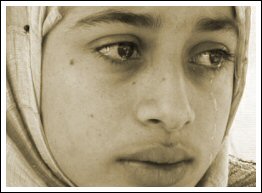
Comments are closed.